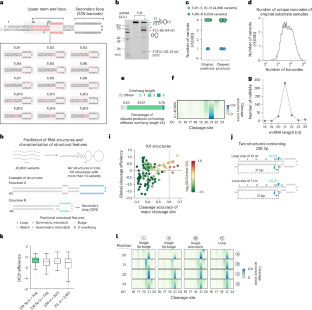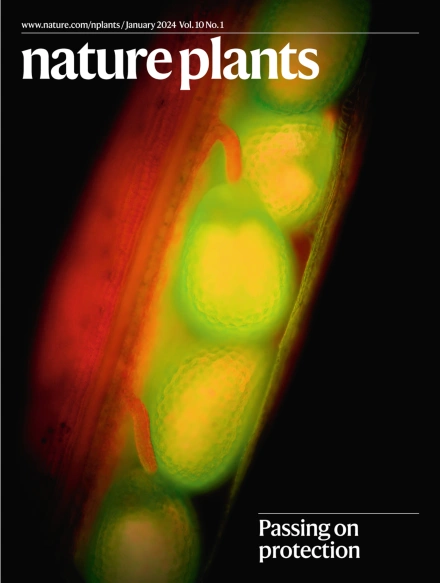Key RNA elements influencing DCL1 cleavage in plant microRNA biogenesis
IF 13.6
1区 生物学
Q1 PLANT SCIENCES
引用次数: 0
Abstract
DICER-LIKE 1 (DCL1), a plant-specific RNase III enzyme, is fundamental to post-transcriptional gene regulation mediated by microRNAs (miRNAs). DCL1 processes precursor miRNAs into mature miRNAs, typically 20–22 nucleotides long. Despite its crucial role, the RNA elements that guide DCL1’s cleavage site selection have remained largely uncharacterized. In this study, we employed a high-throughput sequencing approach to analyse Arabidopsis thaliana DCL1 cleavage patterns on over 46,000 short hairpin RNA sequences previously studied with human DICER. Our analyses revealed that DCL1 cleavage preferences are governed by specific secondary RNA structures and sequence motifs, among which a particular RNA element, designated the GHR motif, emerged as pivotal. This motif remarkably influences cleavage site selection independently of the double-stranded RNA-binding domains and helicase domains of DCL1, operating primarily through the RNase IIIDa domain. The GHR motif is evolutionarily conserved across plant species and is essential for the precise cleavage of various plant precursor miRNAs. Our findings also suggest a role for the GHR motif in the biogenesis of non-canonical 22-nucleotide miRNAs, expanding its functional impact. These insights deepen our understanding of the molecular mechanisms underlying DCL1’s specificity and highlight its integral role in miRNA maturation and gene regulatory networks in plants. This study applied a high-throughput sequencing approach to analyse Arabidopsis DCL1 cleavage. DCL1 cleavage preferences are governed by the GHR motif, which is conserved across plant species and has a role in the biogenesis of non-canonical 22-nucleotide microRNAs.


植物microRNA生物发生中影响DCL1裂解的关键RNA元件
DICER-LIKE 1 (DCL1)是植物特异性RNase III酶,是microRNAs (miRNAs)介导的转录后基因调控的基础。DCL1将前体mirna加工成成熟的mirna,通常长20-22个核苷酸。尽管它具有关键作用,但指导DCL1切割位点选择的RNA元件在很大程度上仍未被表征。在这项研究中,我们采用高通量测序方法分析了拟南芥DCL1在46000多个短发夹RNA序列上的切割模式,这些序列之前用人类DICER研究过。我们的分析表明,DCL1的切割偏好是由特定的次级RNA结构和序列基序控制的,其中一个特定的RNA元件,被称为GHR基序,是关键的。该基序显著影响着DCL1的切割位点选择,而不依赖于DCL1的双链rna结合域和解旋酶域,主要通过RNase IIIDa结构域起作用。GHR基序在整个植物物种中都是进化保守的,对于各种植物前体mirna的精确切割是必不可少的。我们的研究结果还表明,GHR基序在非规范22核苷酸mirna的生物发生中发挥了作用,扩大了其功能影响。这些发现加深了我们对DCL1特异性的分子机制的理解,并强调了其在植物miRNA成熟和基因调控网络中的整体作用。
本文章由计算机程序翻译,如有差异,请以英文原文为准。
求助全文
约1分钟内获得全文
求助全文
来源期刊

Nature Plants
PLANT SCIENCES-
CiteScore
25.30
自引率
2.20%
发文量
196
期刊介绍:
Nature Plants is an online-only, monthly journal publishing the best research on plants — from their evolution, development, metabolism and environmental interactions to their societal significance.
 求助内容:
求助内容: 应助结果提醒方式:
应助结果提醒方式:


